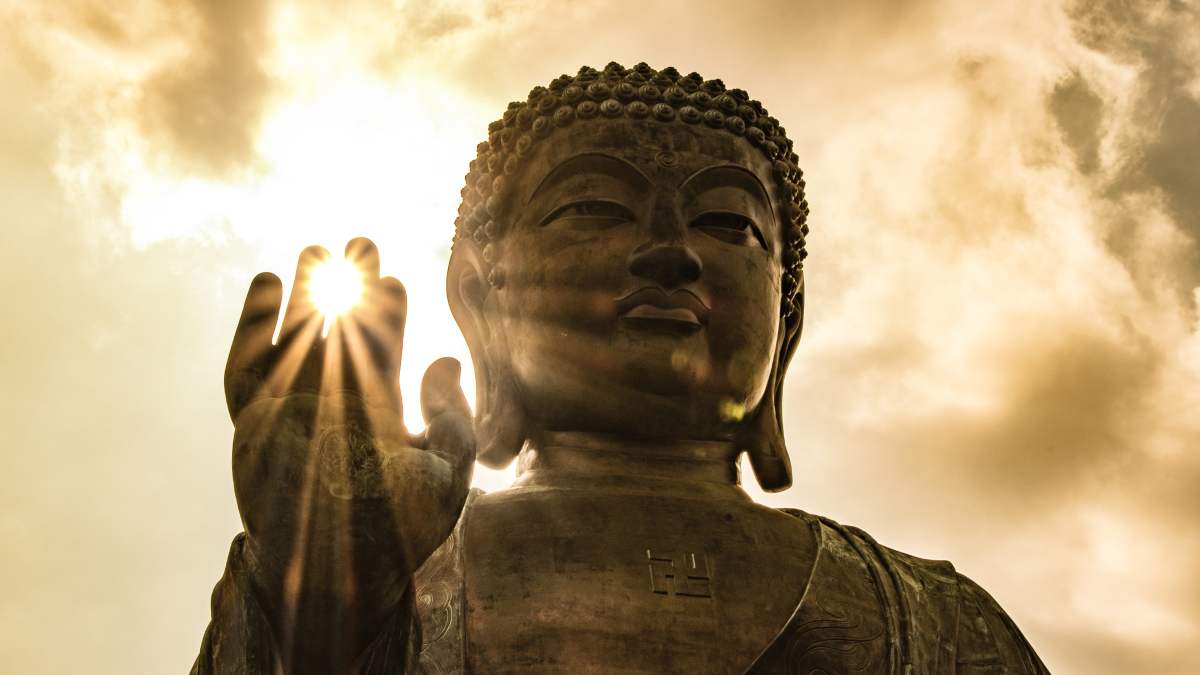
All religions of the world believe in the notion of saints or sages, though they call them by
different names. In Hinduism, Jainism, Buddhism, Sikhism they are called sant, mahatma,
sanyasi, sadhu, aryika, sadhavi, arahant, bodhisattva, swami, pravarjak, guru. Mahatma Gandhi
observed, “All the saints of the world, ancient and modern, were each according to his light and capacity a living illustration of that supreme law of our being”.
Who is a saint? Does anyone who wears saffron, or a red, or an ochre, or a white robe, or even lives without any clothes deserves to be called a saint (or sant)? The answer is a simple ‘No’. A person
does not become a saint only based on the design of, or color of the apparel that he wears.
Only a person who entrenched in the divine or the eternal, who is free from egoism, likes and dislikes, selfishness, vanity, the duality of ‘mine and thine’, or ‘I and the other’, lust, greed and anger, who is endowed with equal vision, balanced mind, mercy, compassion, tolerance, righteousness and cosmic love, and who has divine knowledge, is a saint. The Bhagavad Gita asserts that the saint’s “intellect remains unattached to everything”.
A true saint rejoices in God alone. He feels lowly, helpless and humble before Him and constantly seeks refuge in Him. Even while engaged in worldly activities he keeps repeating God’s name. He, like Janabai’s Abhang, feels, “Dev (the divine Vitthal) is here /dev is there /there is nothing empty of the divine.” He feels surrounded and enveloped by God everywhere.
Saints have an equanimous attitude towards everyone — may they be men or women, animate or inanimate, birds or animals, plants or trees. His attitude is the same in all circumstances, be they happy or sad. It is because their mindset is that of renunciation — an attitude of detachment from the
world. According to the Bhagavad Gita, “A saint judges, what is happiness and sorrow in all beings by the same standard as he would apply to himself.” Renunciation in word and deed, and equanimity according to Hinduism, is what makes saints holy or divine.
Saints and sages represent a point at which the distinction between the divine and human diminishes. They are the custodians of superior divine wisdom, spiritual powers and inexhaustible spiritual wealth. They have overcome the conflict between self-will and surrender to the will of God. Self-realisation
and coming face to face with God or the Supreme is their goal. Once a saint achieves his goal, he readily, without discrimination, imparts his knowledge and experience to those who earnestly desire it. His discourse is in a lucid language without any technical jargon which the seekers easily understand
and practice. Infinite benevolence and complete absence of malice, prejudice or secrecy characterize the way of his life. The life they have lived life is virtuous, idealistic and brimmed with selflessness. They are exemplary models and extraordinary teachers. They have no caste or creed. Their teachings and life are a constant source of inspiration and solace to the troubled world.
Saints and sages are a blessing to the world at large. In Devi Sukta of the Rig Veda, it is said, “The man I love I make increase in strength. I make him a priest, a sage, or a learned seer.” The sages, according to Praaskara Grihya Sutra, “are full of life: Through their observances, they are full of life”.
Such is their magnanimity that, as Swami Sivananda observes, “Their very existence inspires others and goads them to become like them and attain the same state of bliss achieved by them.”
According to Tulsidas, just as cotton undergoes a lot of pain and suffering during the course of change from its raw form to the stitched cloth to ultimately hide the private parts of the person who wears it and makes him look elegant and presentable, a saint too undergoes many severe hardships, pains
and suffering to benefit the universe. They are simple-minded and benefit everyone. They have no friends and foes. They are equanimous towards one and all and wish everyone well. The criterion of distinguishing a saint from an evil person is: Your pain and suffering begin the moment you meet an evil person, whereas your pain and suffering begin when a saint leaves you. You miss his company and well-meant advice all the time.
It is the unfathomable wisdom, the absolute commitment to the welfare and spiritual uplift of all human beings as well as detachment from the mundane worldly objects which make a person a saint. The color of the robes, even the designer robes, has nothing to do with one being a saint, a sadhu, a mahatma and a guru et al.
The writer is a former professor of philosophy, University of Delhi.